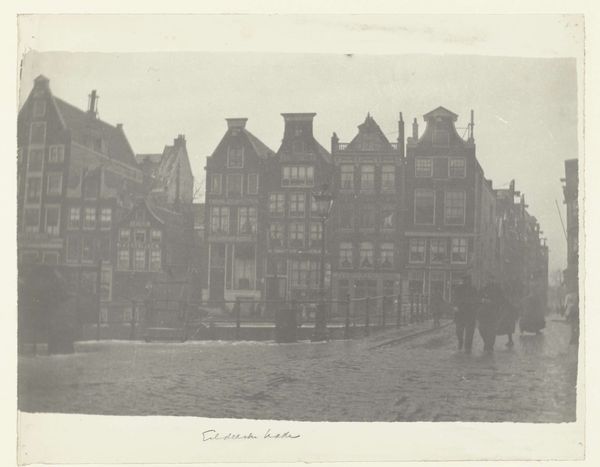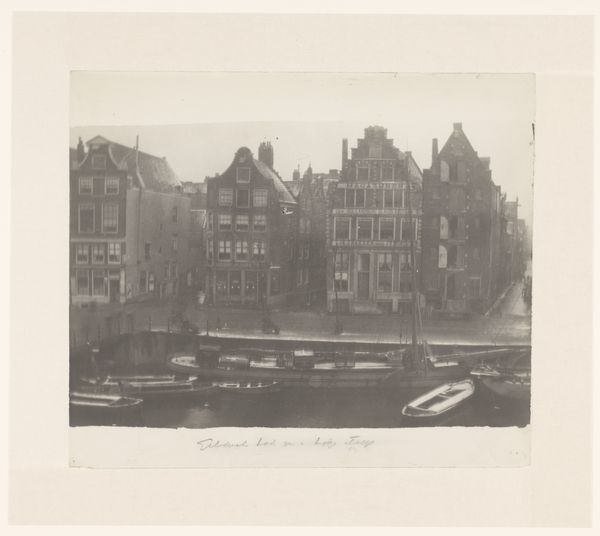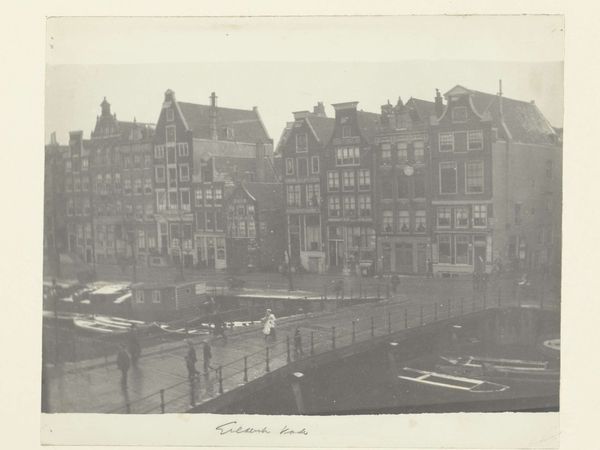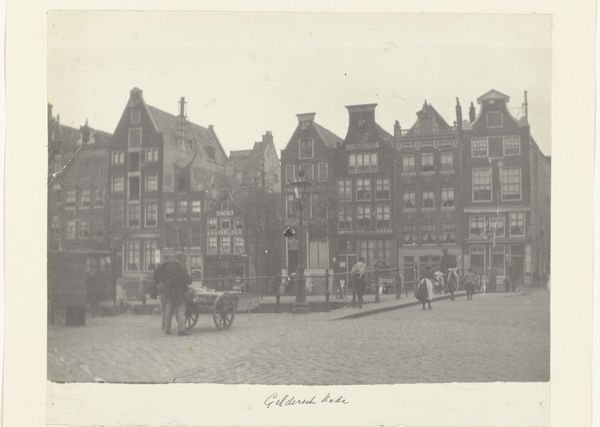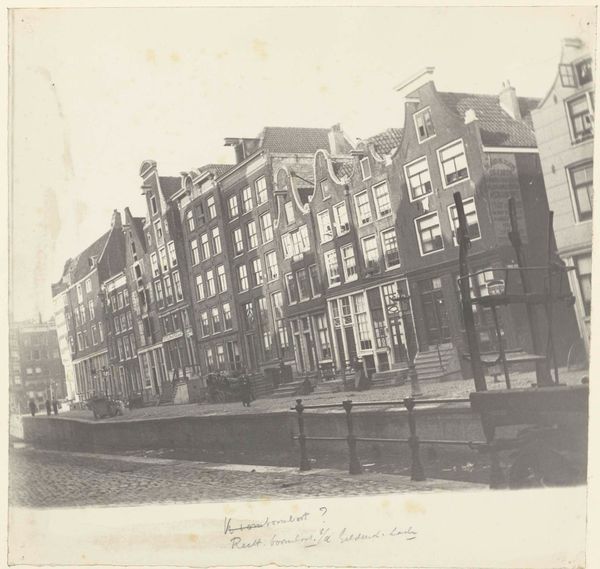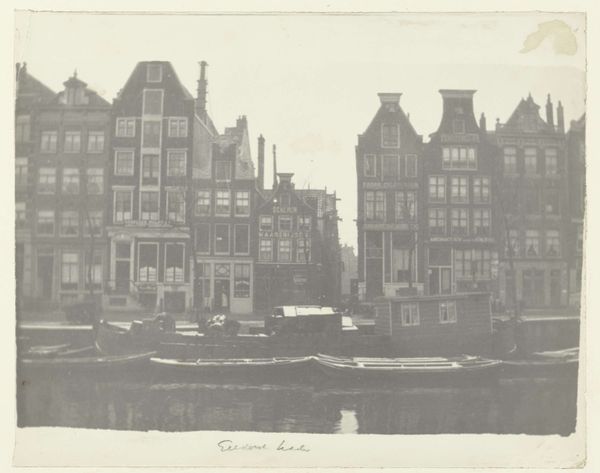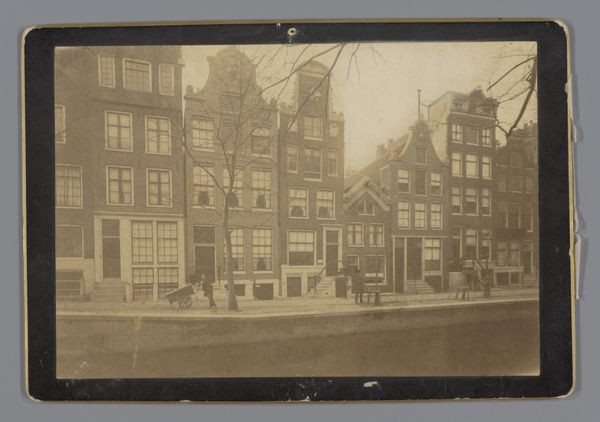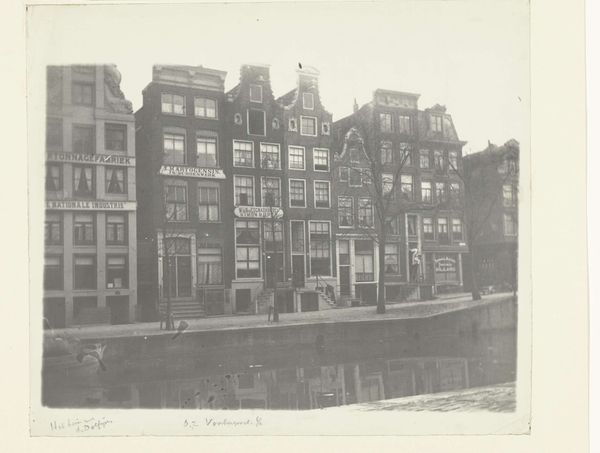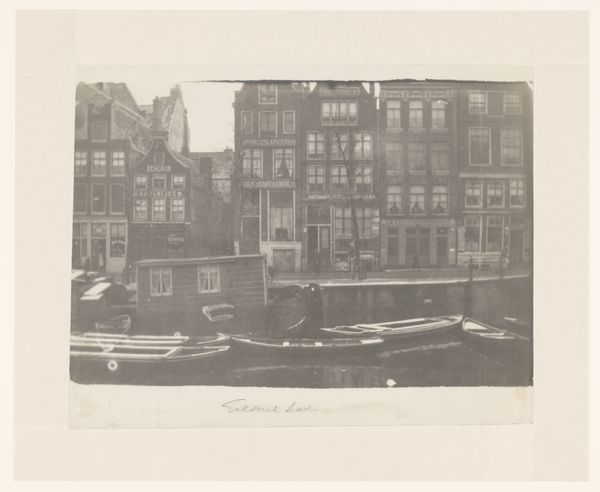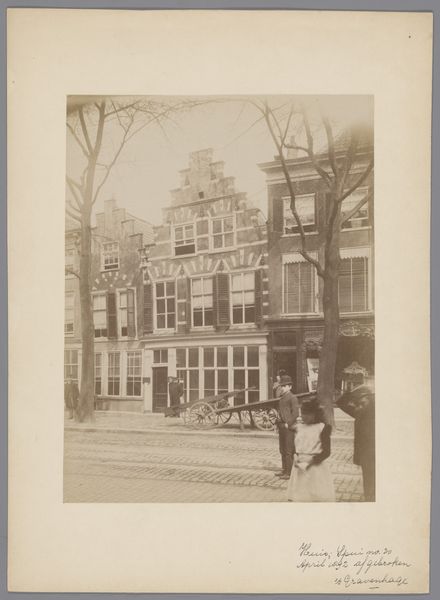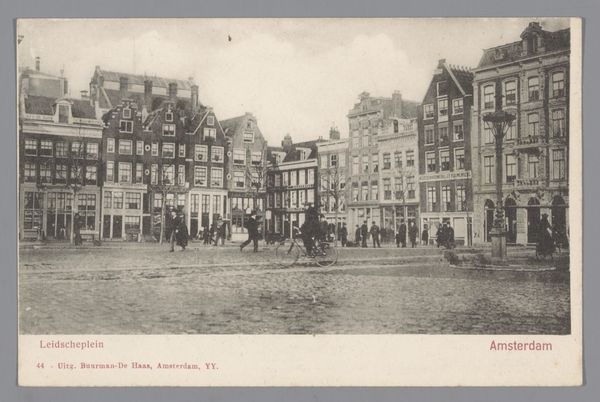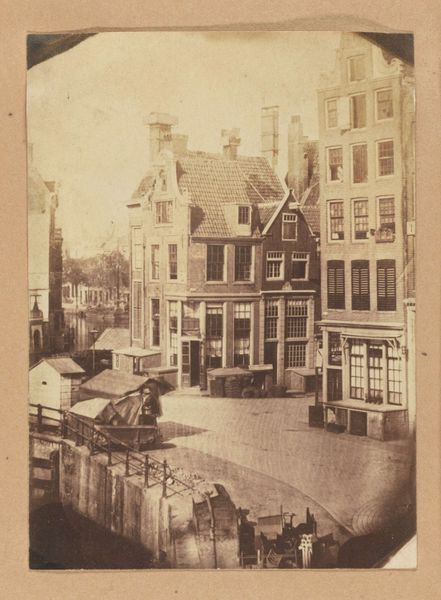
photography
dutch-golden-age
photography
cityscape
Dimensions: height 316 mm, width 386 mm, height 412 mm, width 448 mm
Copyright: Rijks Museum: Open Domain
Curator: Here we have George Hendrik Breitner's "Geldersekade with Ships in Amsterdam," a photograph dating between 1886 and 1910, currently held in the Rijksmuseum. Editor: It strikes me immediately as almost oppressively grey—a very muted palette that seems to emphasize the density of urban life, the heavy skies and closely packed buildings feel somber. Curator: Indeed, the limited tonal range and somewhat grainy texture create a distinct atmospheric quality. The composition is rather interesting. Observe how Breitner uses a slightly elevated perspective to capture the canal, the boats, and the architecture along the Geldersekade. The placement of the bare tree on the right is key. Its stark, vertical form dissects the visual plane adding dynamism and balancing the heavier horizontal emphasis of the buildings. Editor: Absolutely. And I think it is critical to note how the photographic medium itself allows us to consider the democratizing potential inherent to the city, and Amsterdam specifically at this historical moment. Breitner documented working-class figures prominently. Curator: However, I would contend the figures are nearly indiscernible here. It is less of an engagement with individuals. Rather, it emphasizes surface texture and geometric arrangement; the reflections of light on water, the rectangles of windows against brick. It presents more as an interplay of planes, almost abstracting reality. Editor: I agree. The light does activate the urban fabric; but perhaps by removing people from the center, the photograph challenges us to interrogate questions about urban inequality at a moment when industrialization rapidly altered Amsterdam’s landscape. The docks speak volumes even if silent, no? Curator: A valid reading. The choice of this subject and his focus might stem from the artist’s concern about urban changes. And indeed it invites interpretation about human impacts but is formally fascinating to witness the interplay between document and composition. Editor: For me, these sorts of photographs are crucial visual documents that help ground historical narratives in palpable human terms. They can help to highlight how social forces impacted city-dwellers at that time. Curator: And for me, this exemplifies a successful merging of artistic expression within the framework and precision afforded through technology, prompting reflection upon spatial awareness and compositional choices.
Comments
No comments
Be the first to comment and join the conversation on the ultimate creative platform.
